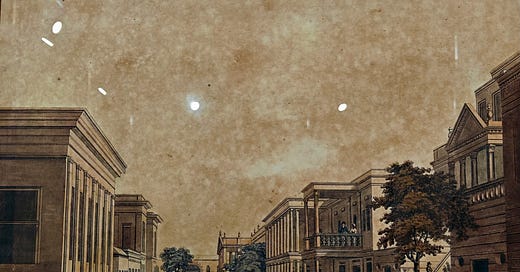A Marxist Critique of AI Art
The debate over AI art’s ethics rages on, with artists voicing strong opposition. In this article I explore deeper questions that challenge its very legitimacy.
Lately, my Twitter (X) and LinkedIn feeds have been flooded with the ‘Ghiblification’ trend—where everyday photos, memes, movie posters, and even personal pictures are transformed into AI-generated images mimicking Studio Ghibli’s signature aesthetic. This trend highlights a deeper issue: It’s a perfect example of how AI-generated art is becoming deeply embedded in internet culture, seamlessly blending into our feeds. Yet, beneath the surface, it reflects the same exploitative dynamic—where the labor of real artists is used as raw material for viral spectacle, all while tech companies reap the benefits.
The rise of AI image generators like DALL-E 3, Midjourney, Stable Diffusion and quite recently OpenAI has turned millions of artists into unwitting data serfs. Their work, scraped without consent, fuels these models—allowing tech corporations to profit while leaving the original creators uncompensated and alienated from their craft.
Lets do a bit of Marx 101
So in a capitalist society (like ours), the means of production—whether factories, land, or software - are owned by corporations, not by the workers who generate value.
The same applies to AI-generated art. The tools used to create digital images are controlled by tech giants like OpenAI, Stability AI, and Google, not by the artists whose labor trains them.
Marx argued in Capital, Volume I that when technology is monopolized by the bourgeoisie (upper class), workers become dependent on capitalists for survival.
AI art follows this pattern. Artists do not own or control the tools trained on their work, yet they are expected to compete against them. The result is a deepening of class stratification: corporations reap the profits, while artists struggle to maintain their livelihoods.
AI models rely on vast datasets scraped from online art communities, portfolios, and archives. In most cases, this is done without the knowledge or consent of the artists.
There have been many cases where the artist found out their art was plagiarised by some random people on the internet, using an AI model online.
The practice closely mirrors what Marx called primitive accumulation —the process of seizing public or communal resources and converting them into private capital.
David Harvey updated this concept as ‘accumulation by dispossession’ a phenomenon where corporations extract value from collective resources without fair compensation. Stability AI and Midjourney generate massive revenues from unpaid artistic contributions, while the artists themselves are sidelined. This isn’t a fair exchange
Time for Marx 102
Marx’s theory of alienation (read it in free time) explains how workers become estranged from their labor under capitalism.
Okay so let me pause for a while, and give a small example on what exactly
"estranged from their labor” mean - imagine a software developer working at a big tech company. They spend their days fixing tiny bugs or writing code for a feature they didn’t design, for a product they don’t own (the company owns that).
They might never see how their work helps users (seldom they do), and decisions about the product are made by executives they never meet (product mangers and C-suites) Over time, coding stops feeling creative or meaningful—it just becomes another task in a long backlog.
Now getting back to the discussion, AI-generated art exacerbates this alienation in three key ways:
Alienation from the Product: Artists' works are used to generate AI images they have no control over. Their unique styles are replicated, often with no attribution.
Alienation from the Process: AI turns art into an algorithmic function, stripping away the intentionality, emotion, and experience that define human creativity.
Alienation from Human Potential: Art is more than a commodity—it’s a means of critical expression. But when AI art floods the market, prioritizing quantity over meaning, it devalues art as a medium for thought and resistance.
Under AI, art is increasingly reduced to a commodity optimized for engagement, not expression. Platforms like Shutterstock now sell AI-generated images, often undercutting human artists in the process. Capitalism flattens cultural production, favoring marketable aesthetics over depth or originality.
AI art isn’t just a new tool—it’s a new phase in the commodification of creativity, one that prioritizes corporate shareholders over artistic communities.
Conclusion
The exploitation of artists by AI is not a technological inevitability—it’s a capitalist one. The issue isn’t the existence of AI itself but who controls it.
A different future is possible (you all know what to do 👀) where artists have full control over what they create and there is no corporation that feeds off their labor.



